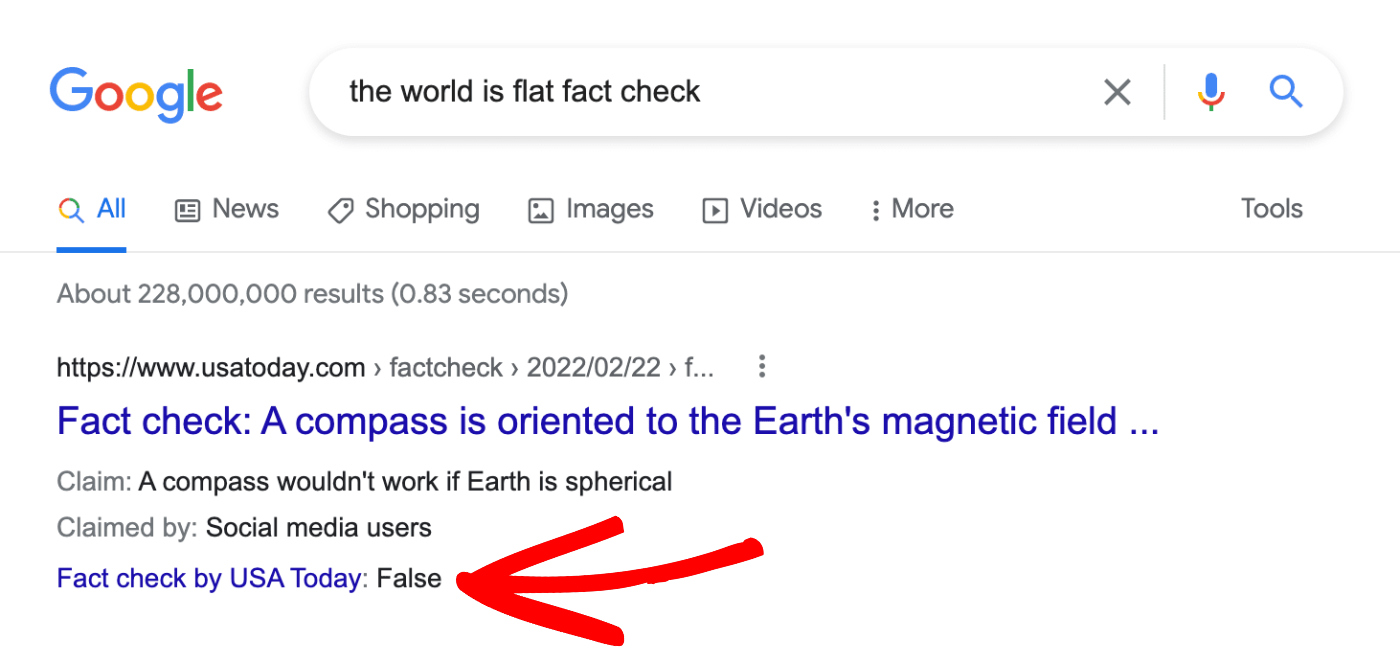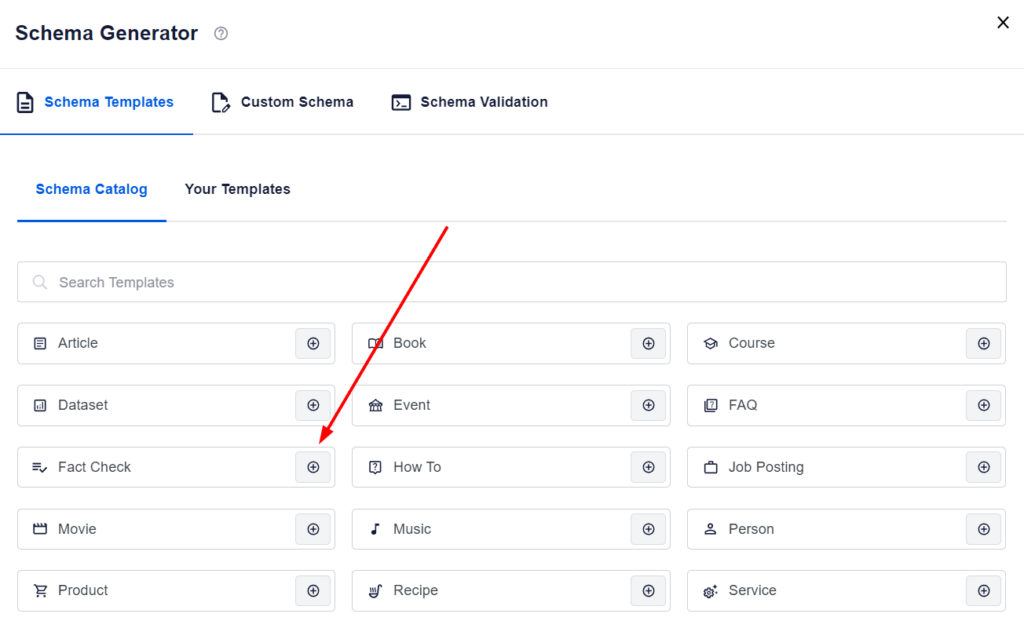Notice: There is no legacy documentation available for this item, so you are seeing the current documentation.
Did you know that All in One SEO Pro lets you add Schema markup for fact checking of claims by others?
This means that search engines can display rich snippets for your fact checking like the example below.

IMPORTANT:
You can’t force Google to display search results like this. It happens on a per search basis depending on whether they feel it’s the best way to display the results.
In This Article
Setting the Schema Type for Individual Fact Checks
NOTE:
Schema Controls for Fact Checks is available to customers with a Basic plan or above for All in One SEO Pro.
Upgrade to All in One SEO Pro today to get Fact Check Schema and many more features!
To set the Schema Type for individual content, edit your content and scroll down to the AIOSEO Settings section, then click on the Schema tab.
Now, click the Generate Schema button to open the Schema Generator.

You’ll see the Schema Types that are available.
Click the Add Schema icon next to Fact Check to add it.

You can now edit the schema information.
Once done, click the Add Schema button to add the schema to the post.

The Fact Check schema has now been added to the post.
If you would like to edit any of the schema properties or delete the graph, click the Edit Schema or Delete Schema buttons in the graph card.

Configuring the Fact Check Specific Information
When you click on Fact Check as the Schema Type for your content, you’ll see a popup with additional fields where you can enter your fact check information.
NOTE:
The information you set in All in One SEO only appears in the source code of your content. It does not appear as content visible to visitors on your site.

Complete the fields as described below:
- Name – Enter the name of your fact check. By default, this is set to your post title.
- Description – Enter the description of your fact check. By default, this is set to your post content.
- Rating – Indicate how false/true the claim is that you have reviewed.
- Date Published – Enter the publish date of your fact check.
In the Author section, you can set the following:
- Type – Select whether the organizer is a person or a group/organization.
- Name – Enter the name of the organizer .
- URL – Enter the URL of the organizer’s website or social media page.
You can leave all these fields blank if you have set an Organization in the Knowledge Graph settings and want to use that one.

In the Claim section, you can set the following:
- Appearance – Enter a link to an article/outlet where the claim you reviewed was originally published or describe it using an inline description.
- Date Published – Enter the date on which the claim was first published.
- Author Type – Select whether the author of the claim is a person or a group/organization.
- Author Name – Enter the name of the person/organization that published the claim.
- Author URL – Enter a URL that references the person/organization that published the claim.

Once you’ve completed the fields, click the Add Schema button to save them.
You can also save this as a template which you can use on other fact checks by clicking the Save Schema as Template button.
You can learn about Schema Templates here.
Additional Information
Check out more documentation on our Schema Settings here.